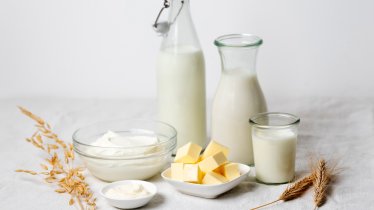From Schnitzel to steak, pan to grill, beef comes in many wonderful varieties in Tirol. The region's farmers pride themselves on producing delicious meat using sustainable methods. Try it yourself and taste the difference!
- On average livestock farms in Tirol have just 5.2 cows, while dairy farms have 11.6 cows.
- Cows in Tirol graze mainly on alpine grass and herbs, either fresh from the pasture or as dried hay. They receive fresh spring water to drink
- 100% of the farmsteads are located in the mountains, many of them in high-altitude locations (zone 4). Four out of ten of all Austria's zone-4 farmsteads are in Tirol. This means the animals must be robust enough to with stand the tough conditions high in the mountains.
- More than half of the cows (57%) and around two-thirds of calves (63%) spend the summer grazing on high-alpine pastures. This makes them strong and means they do not need to be given antibiotics or other medication. It also creates a special pattern of fatty acids within the meat, with much higher concentrations of unsaturated fatty acids. Unsaturated fatty acids reduce the risk of cholesterol and cardiovascular diseases in humans.
The perfect combination for healthy eating
Meat is best served with vegetables and salads. The vitamin C in these improve the body's ability to absorb the iron in the meat.
Serving recommendation
Mustard goes very well with meat. This is because mustard contains mustard oil glacosides, which are associated with diverse positive effects on the body. They can also be found in radish, horseradish, cabbage and cress varieties, including nasturtium. Combinations of meat and vegetables provide an excellent balance of protein and vitamins.
How to recognise top-quality produce
- Raw (red) meat, for example beef and ox, should have "broken" lines of fat and dark areas. Meat which is deep red everywhere and has long lines of fat without breaks indicates that the meat was not left to rest long enough after the animal was slaughtered. This makes it tougher and more difficult for the body to digest.
- Meat which has been cooked should still have visible lines of fat. Cut off a slice and take a close look.
- Areas of fat visible on the meat after cooking remain soft even at room temperature.





